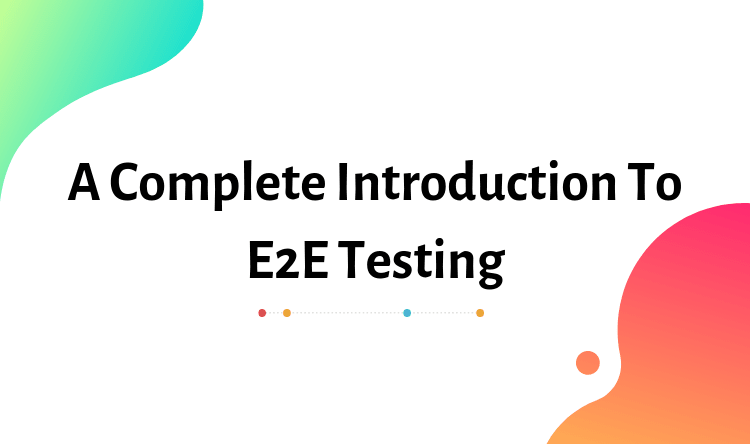Nowadays, software systems are complex and interconnected with numerous subsystems. Whether the subsystem is the same or different from the main system, within or outside the organization, subsystem failures can cause adverse effects throughout the entire system. This is a major risk and can be avoided by end-to-end testing.

What is E2E Testing?
End-to-end (E2E) testing is a technique that tests the entire software product from beginning to end to ensure the application flow behaves as expected. In other words, it helps define the product system dependencies and ensures all integrated pieces work together as expected. Eventually, the main purpose of this testing type is to test from the end user’s experience by simulating the real user scenario and validating the system under test and its components for integration and data integrity.
Learn more: End-to-End (E2E) Testing Introduction
Benefits of E2E Testing
End-to-end testing has been more reliable and widely adopted because of these following benefits:
- Expand test coverage
- Ensure the correctness of the application
- Reduce time to market
- Reduce cost
- Detect bugs
E2E Testing Lifecycle
An end-to-end testing lifecycle consists of four components: test planning, test design, test execution, and results analysis.
- Test planning: Specifies key tasks, associated schedule, and resources
- Test design: Test specifications, test case generation, risk analysis, usage analysis, and scheduling tests
- Test execution: Executes test cases and documents testing results
- Results analysis: Analyzes test results, evaluate testing, and perform additional testing if necessary
When to Apply E2E Testing
E2E testing is regularly conducted on finished products and systems, making each review a test of the completed system. A second test will take place if the system does not output what is expected or if a problem is found. In this case, the team will have to record and analyze the data to determine the issue’s origin; then fix and re-test them.
To help you better understand the scenario to apply end-to-end testing, here’s an example:
Before testing, designers and developers create a list of which UI, functions or features that need to be performed. Data flow should be tracked between systems to find dependencies, flaws, and inaccuracies. Teams also have to prepare the conditions – factors that may change any interface options – before testing.
End-to-end Testing Methods
Horizontal E2E testing
A commonly used method occurring horizontally across the context of multiple applications and easily takes place in a single ERP (Enterprise Resource Planning) application. Here’s an example. A Web-based application of an e-commerce system includes accounts, product inventory status, and shipping details.
Vertical E2E testing
This method refers to testing in layers, meaning that tests happen in sequential, hierarchical order. To ensure quality, each component of a system or product is tested from start to finish. Vertical testing is often used to test critical components of a complex computing system which does not typically involve users or interfaces.
Metrics for End-to-end Testing
Some of the many metrics used for E2E testing are:
- Test Case Preparation Status: Used to determine the specific position of the test cases that are under preparation, compared to planned test cases.
- Test Progress Tracking: Test progress should be tracked on a weekly basis. This step will provide regular details of test completion percentage, such as passed/failed, executed/unexecuted, valid/invalid test cases, and so on.
- Defects Status and Details: It gives a weekly percentage of open and closed defects. Also, weekly defect distributions are based on severity and priority.
- Environment Availability: The actual number of operational hours and hours scheduled per day for testing.
Conclusion
In this competitive market, the end-user can be very choosy, and E2E testing is one of the most effective ways to ensure end-user application performance. So, keep in mind that it’s necessary to perform E2E testing of applications to provide a good user experience.


Top comments (0)